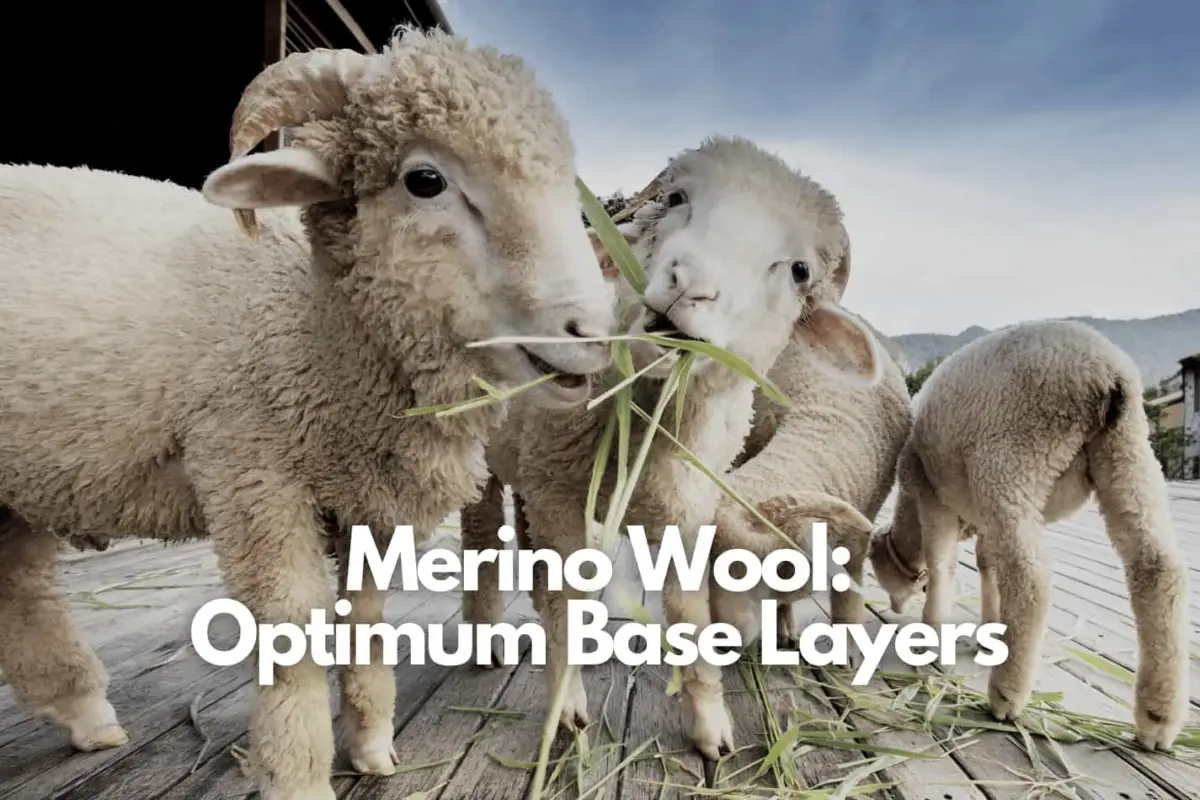When choosing your clothing for a thru-hike, many fantastic options are available. Now, you have a wide range of synthetics, wool, and blends. This may make you wonder why merino wool is the best base layer.
Merino is odor-resistant and a near-perfect clothing choice for a thru-hiker, with the only true negative being price. Currently, no other synthetic fabrics with the same level of performance in durability, warmth, and weight with this level of benefits.
Let’s examine why merino is a perfect material for hiking base layers as it is for nearly any outdoor activity, including thru-hiking:
12 Reasons Why I Choose Merino Wool for a Base Layer
A merino wool base layer option is perfect for hiking as it is loaded with many features that increase the performance and lifespan of the garments. Some advantages of merino wool I will cover are below.
Odor-Resistance
If you haven’t been on longer duration thru-hikes, then the main benefit of merino may not seem all that amazing. Still, merino wool is naturally odor-resistant, which helps keep the stank lower by eliminating the smelly bacteria accumulated.
Being stinky is unavoidable, but anything you can do to minimize the funk is worth it! As your hike continues, you will be in close quarters with other hikers, and no one likes a stinky hiker.
To take full advantage of this odor-resistance feature, you should choose a base layer that is 100% merino wool. Some companies cut costs by using only a blend of materials like polyester, significantly reducing odor-resistant properties.
Temperature Regulation & Breathable
Another great feature is that merino wool is an excellent temperature regulator. This is due to how the fibers are constructed, which can absorb and release moisture vapor.
This means it will help keep you cool in hot weather and warm in cold weather. The base layers are also moisture-wicking, so you won’t feel as sweaty, even when pushing hard on a hike or in warmer temperatures.
The breathability is essential for any hiker because you want your clothing to dry quickly. If your clothing takes too long to dry in cold rainy conditions, it increases the risk of developing hypothermia.
UV Protection & Sun-Resistant
Merino wool is known for its protection from the elements, including UV rays and the sun. The natural fibers provide a physical barrier between your skin and the sun’s harmful rays.
This is essential because, as we all know, extended exposure to UV rays can cause Sunburns, which is never fun. The last thing you want is to deal with a painful sunburn while trying to hike 20 miles a day!
Multiple Fabric Weights
Merino comes in many weights, and while suitable for next-to-skin layers, it can perform well as socks, underwear, mid-layer, and even outer layer, depending on construction.
Depending on your needs, these weights allow for more custom use, essential for a thru-hiker. You may want a lighter base layer for hot weather and a heavier one when the temperatures drop at night or in the morning.
The different weights also offer durability as the thicker fabrics last longer before developing holes.
Insulates When Wet
Unlike synthetic materials, damp merino provides you with massive heat retention properties. The fibers are hollow, so they can trap heat from your body when wet and prevent it from escaping.
This is essential for thru-hiking because you will inevitably get wet at some point, whether from sweat, torrential rain, or just a simple river crossing.
When this happens, you want your clothing to insulate you; unfortunately, fast-drying fabrics like traditional synthetic base layers don’t do as much to keep you warm when wet.
Dries Incredibly Fast
Merino also is a quick-drying fabric. The natural fibers allow for better airflow so that moisture can evaporate quickly, even in high-intensity activities like hiking.
This is essential because you don’t want your clothing to stay wet for too long, as it will cause you to feel cold and could lead to hypothermia.
The faster-drying properties also help to prevent chafing as the fabric won’t stick to your skin; this is why merino wool has become a favorite for socks.
Non-Itchy & Comfortable Along With Soft To The Touch
Merino is a 100% natural fiber sourced from Merino sheep, but unlike standard wool, it is non-itchy. The fibers are much finer, and the fabric is softer to the touch, which makes it more comfortable to wear.
Natural fibers also help to regulate temperature and moisture better than synthetic materials like polyester. This is essential for long hikes as you want to be as comfortable as possible, especially when carrying a heavy backpack.
This contrasts with traditional wool, which can be quite itchy and uncomfortable, especially when wet, due to the different fibers from different sheep.
Amazing Cooling Properties
Another fabulous property is the moisture management and cooling properties of Merino. The fabric is excellent at wicking away sweat and moisture from your body, essential for keeping cool in hot weather.
The fabric can also release heat vapor so you won’t overheat, keeping your body temperature lower even when working hard on a hike.
This is essential because you want to ensure you don’t overheat, which can lead to dehydration and heat exhaustion.
Impressive Warmth
The wool has an exceptional warmth-to-weight ratio that is perfect for thru-hiking. The Merino fibers can trap heat from your body while still being lightweight, so you won’t feel weighed down by your clothing.
This is essential because you want to be as comfortable as possible on your hike, and the last thing you want is to feel burdened by your clothing.
The warmth is also great for cold weather as it will help to insulate you even when wet, as mentioned above, which is essential for preventing hypothermia.
Sustainability
Coming from merino sheep, the natural fiber is infinitely sustainable as the sheep need the excess removed in the warm weather to help their body heat dissipate. Merino clothing is also a normal fiber, making it biodegradable, unlike synthetic materials.
For many thru-hikers, this is important as they often spend extended periods in nature and want to ensure that they limit their impact on the surrounding area and ensure their clothing is not harming the environment.
The sustainability of the fabric is also great for those looking for ethical clothing options, as no animals are harmed in the production of merino wool clothing.
Durable Fabric
Merino garments are solid and long-lasting, perfect for multi-day trips that a long-distance hiker often takes. The wool is resistant to wear and tear and can withstand repeated washings without breaking down like some synthetic materials.
This is important for many thru-hikers as they need their clothing to last as long as possible and not need constant replacements during their trip. Nothing is as irritating as clothing and gear falling apart after a few days.
Fire Retardant
Another great feature is that Merino is fire-resistant. This is due to the high nitrogen levels in the fibers, making them less flammable.
The flame-retardant characteristics of this material are due to its distinctive chemical structure, which includes a high nitrogen content combined with a high relative moisture content.
Synthetic garments can burn and melt, making them dangerous to wear in certain situations. However, with Merino, you can be confident that your clothing won’t catch fire, making it a safer option for hikers.
Final Thoughts on Merino Wool as a Thru-Hiking Base Layer
The market for Merino wool has been growing as more and more options come on the market, and the prices, over time, I expect backpacking base layers from many more manufacturers and vendors, which should bring the costs down even more.
Now that you understand all the benefits of merino wool, it is easy to see why this fabric is the best option for a thru-hiking base layer.
The moisture management, cooling, and warmth properties are essential for comfort on your hike, and the sustainability and durability of the fabric make it an excellent long-term investment.
So, if you are looking for the best base layer for your next thru-hike, look no further than merino wool. What are your thoughts? Is there another base layer material you prefer?



Leave a Comment